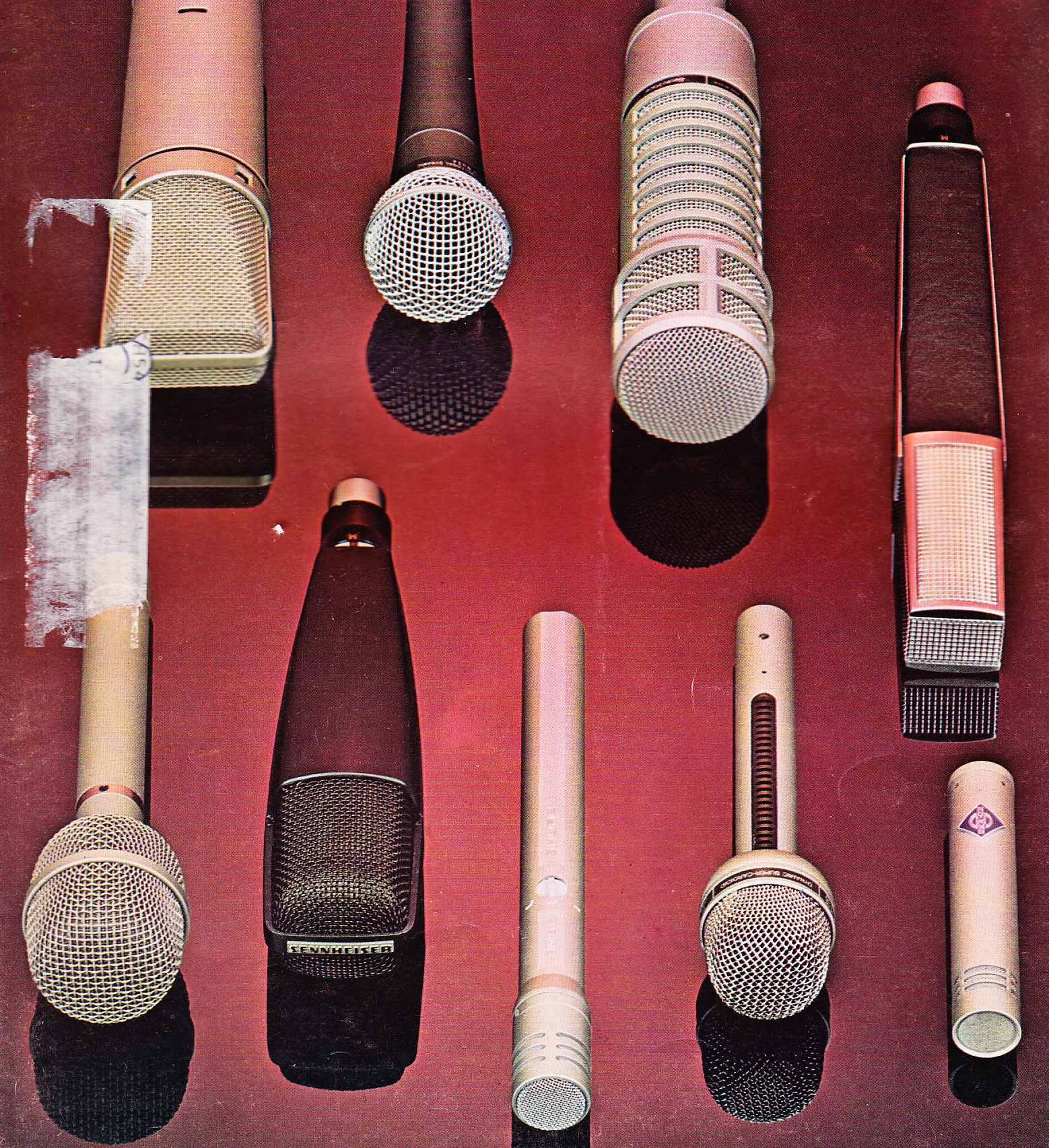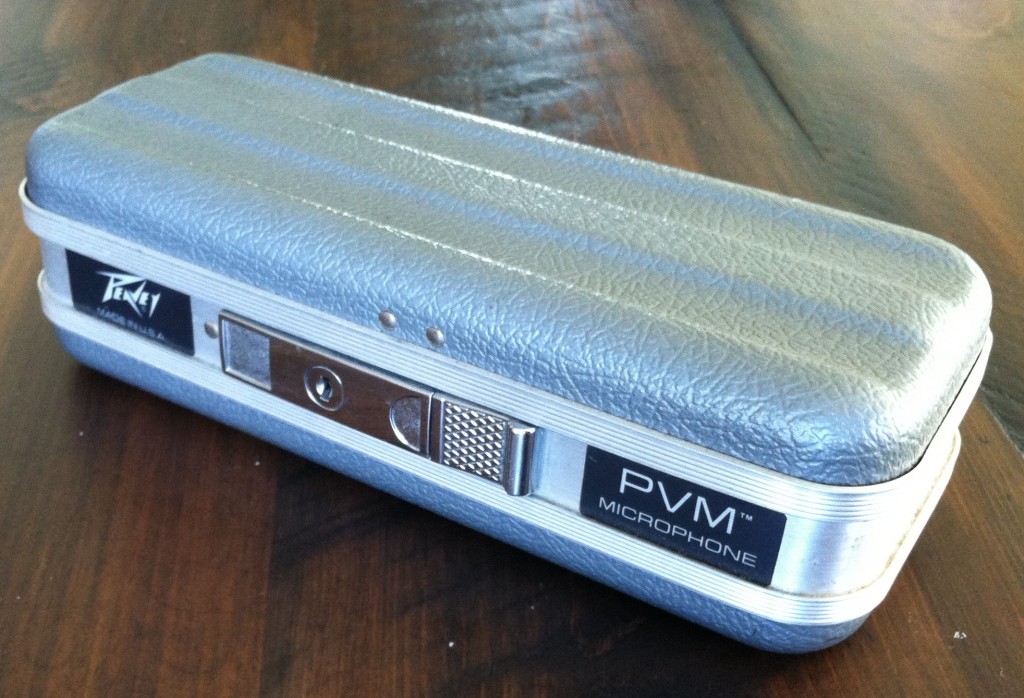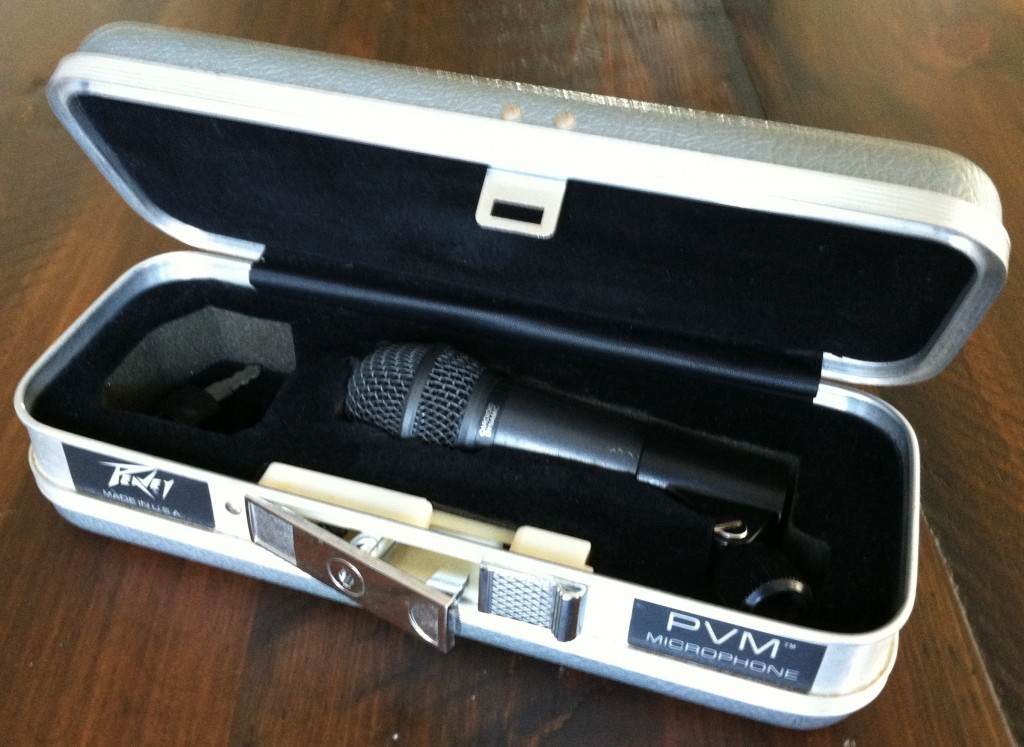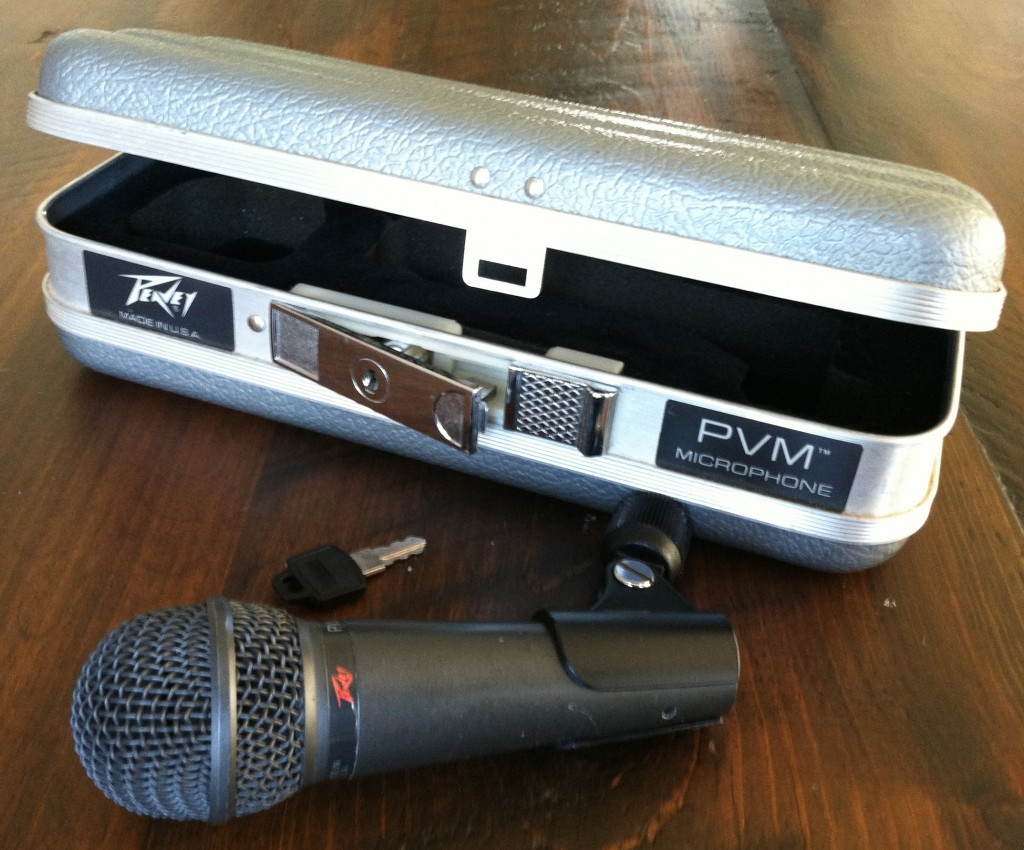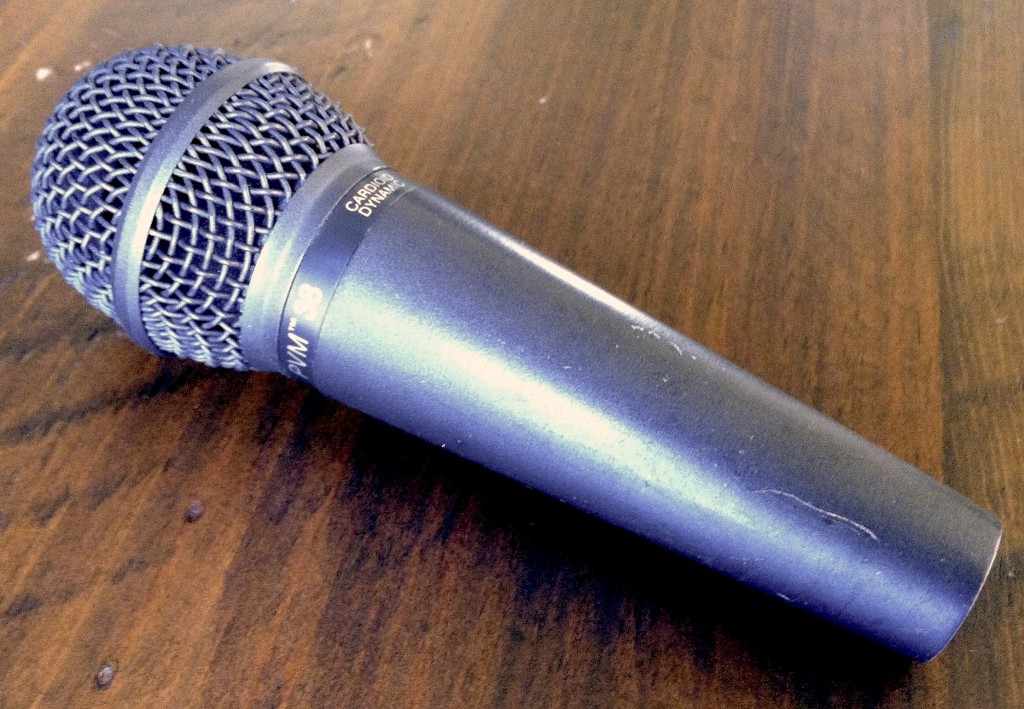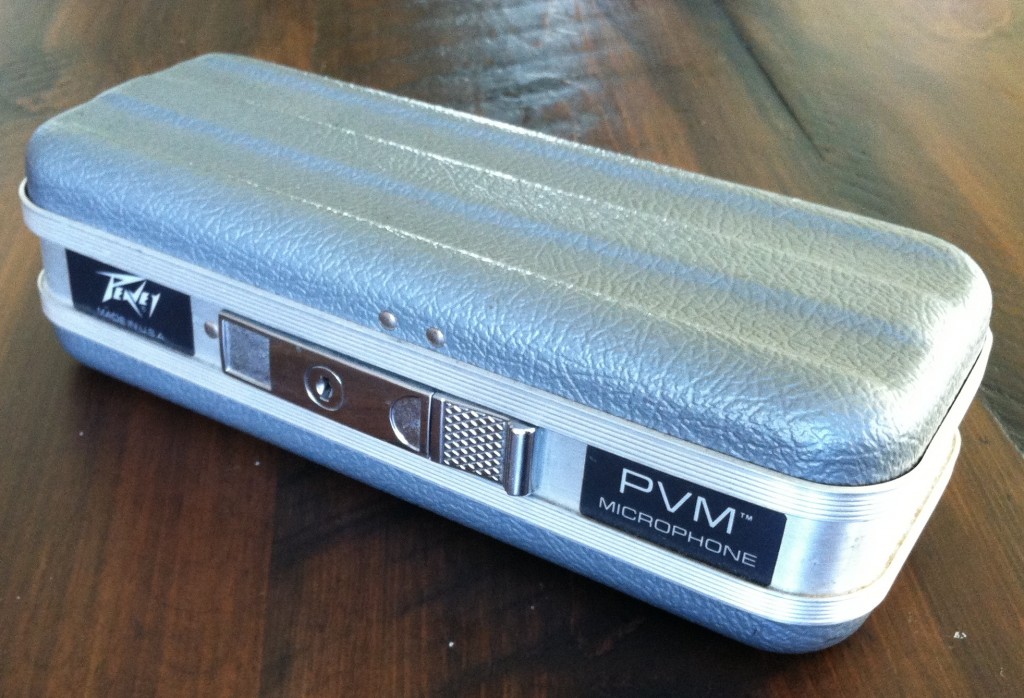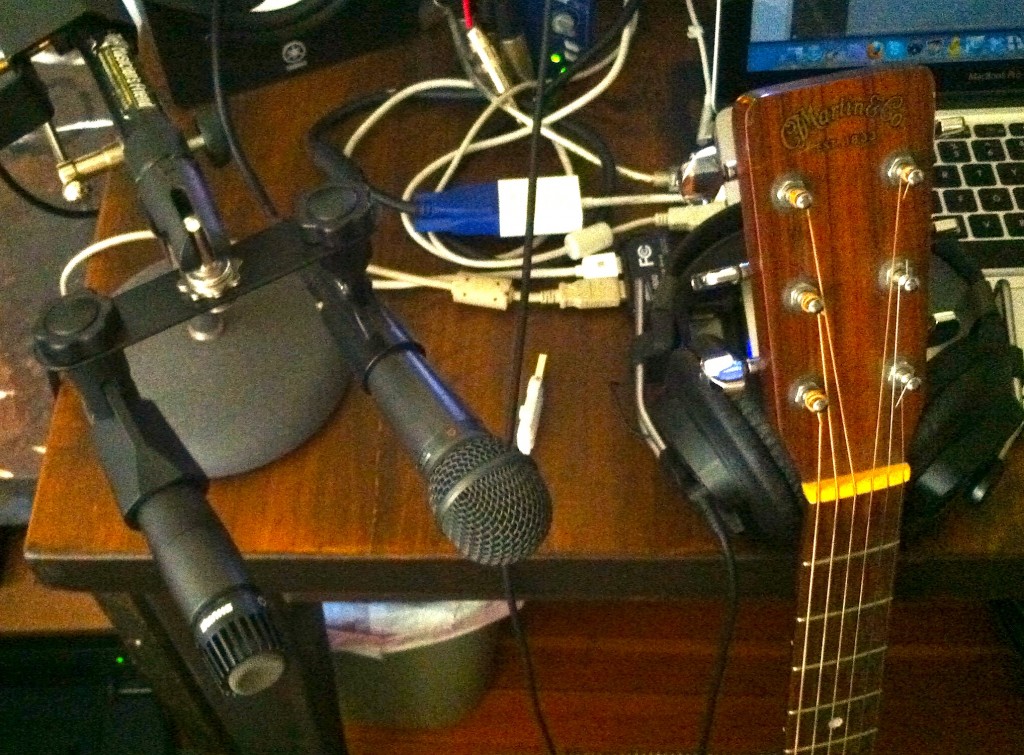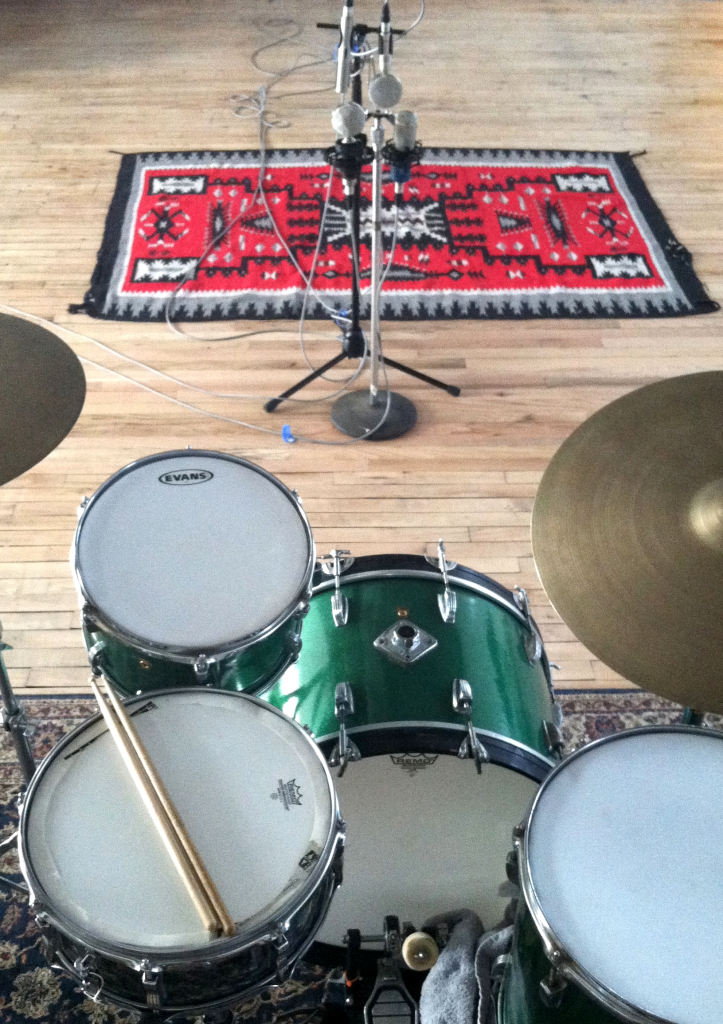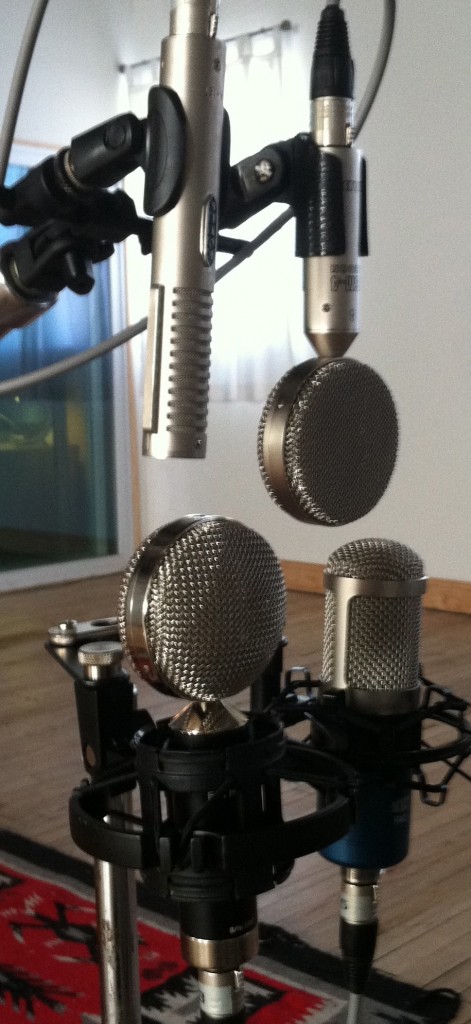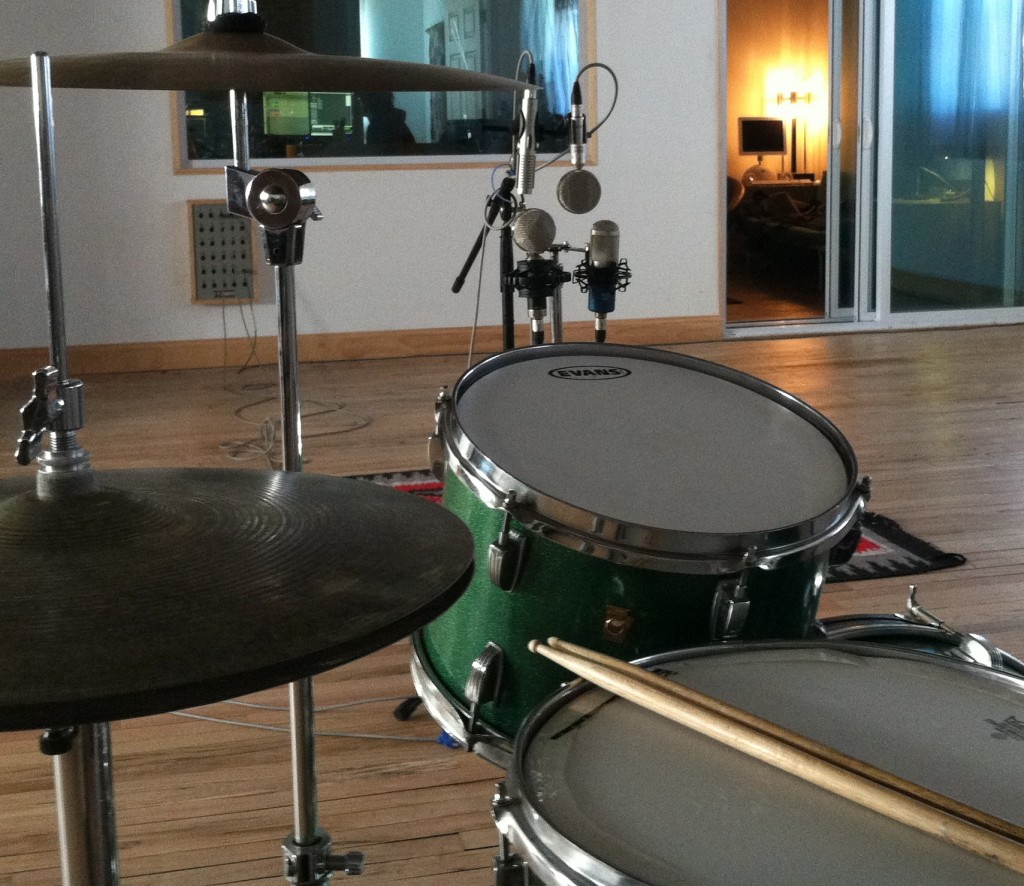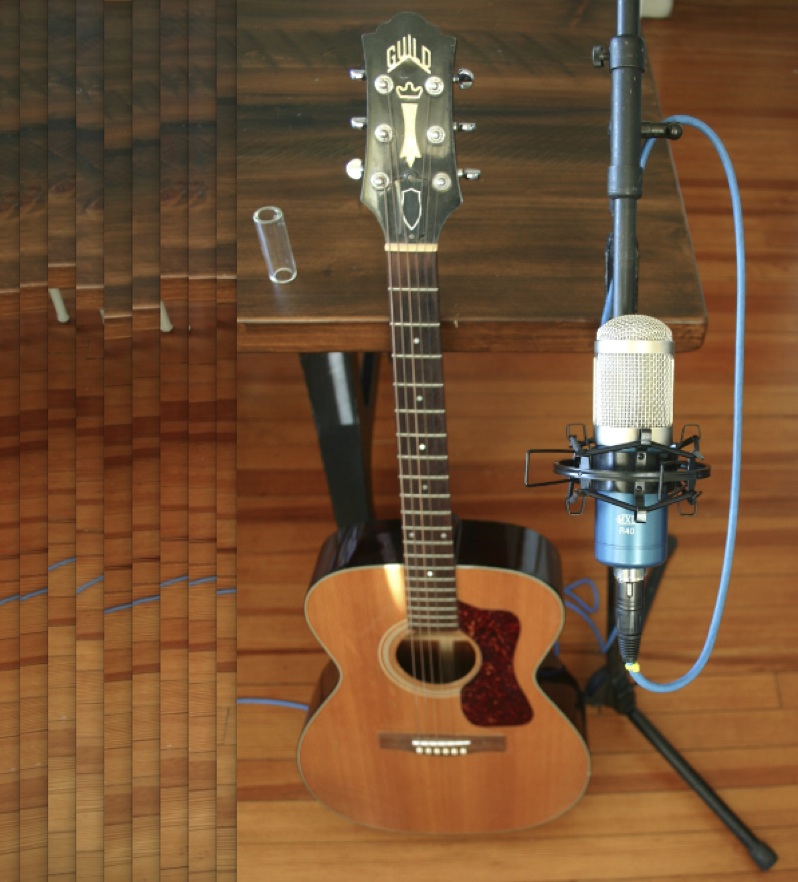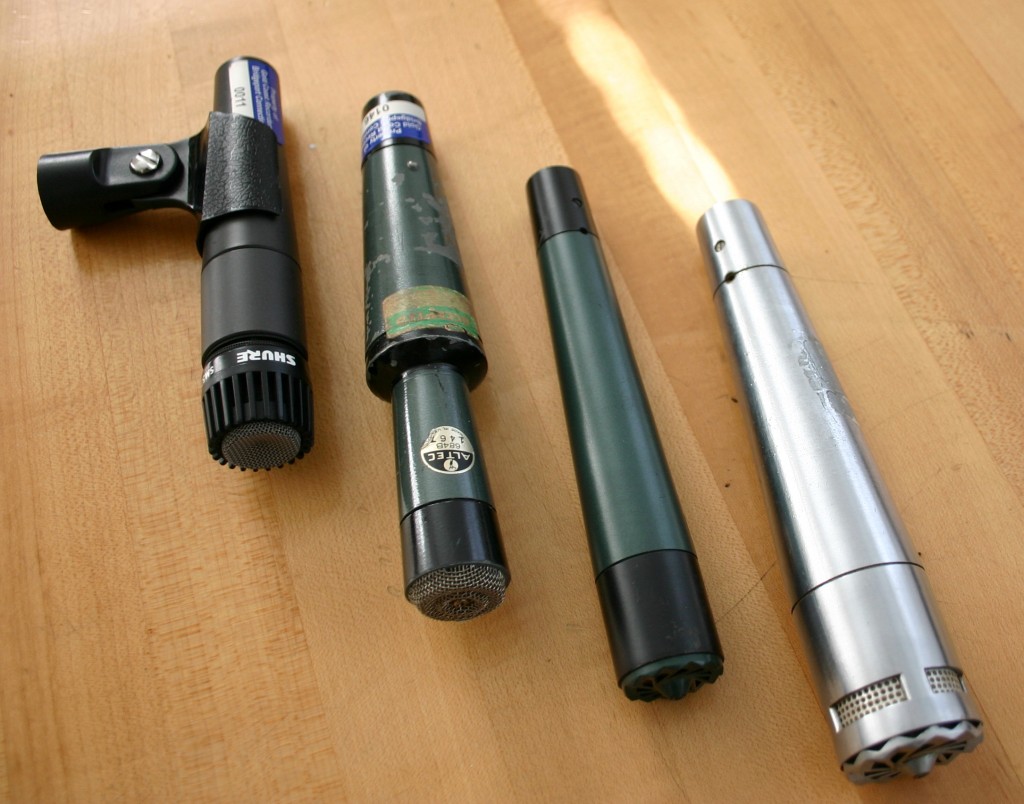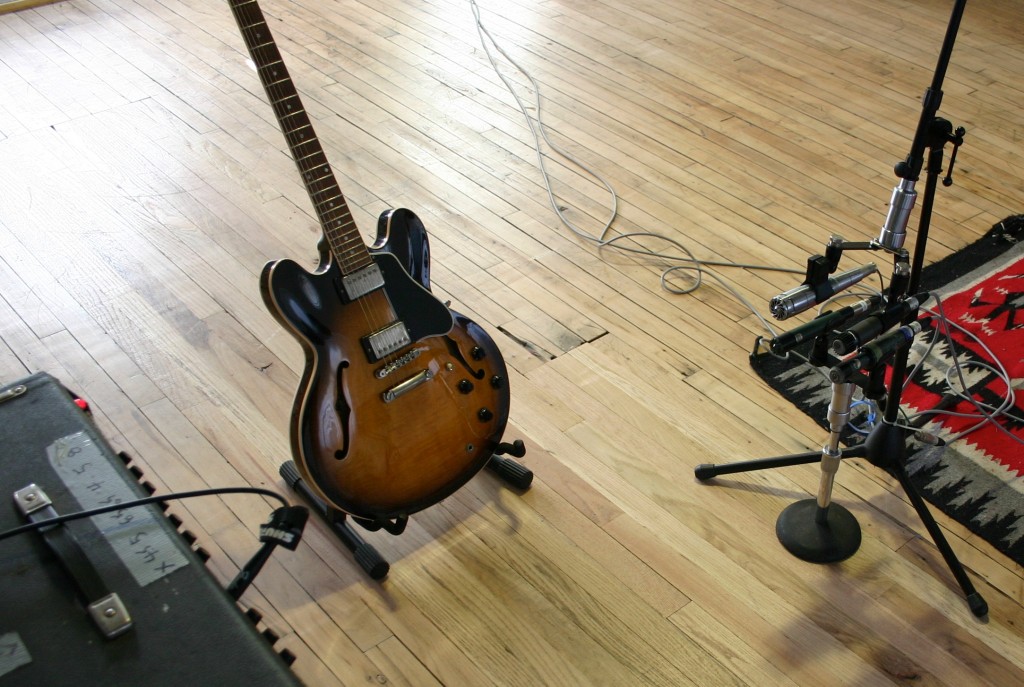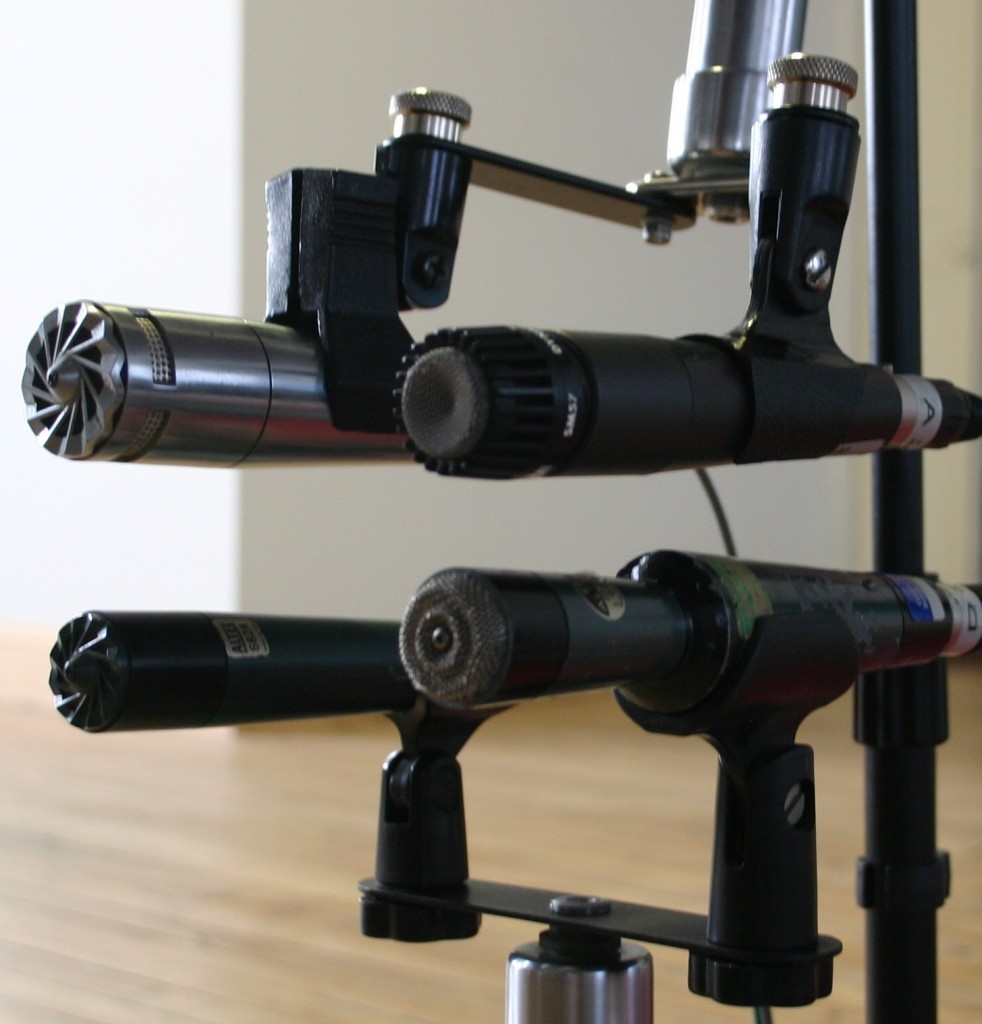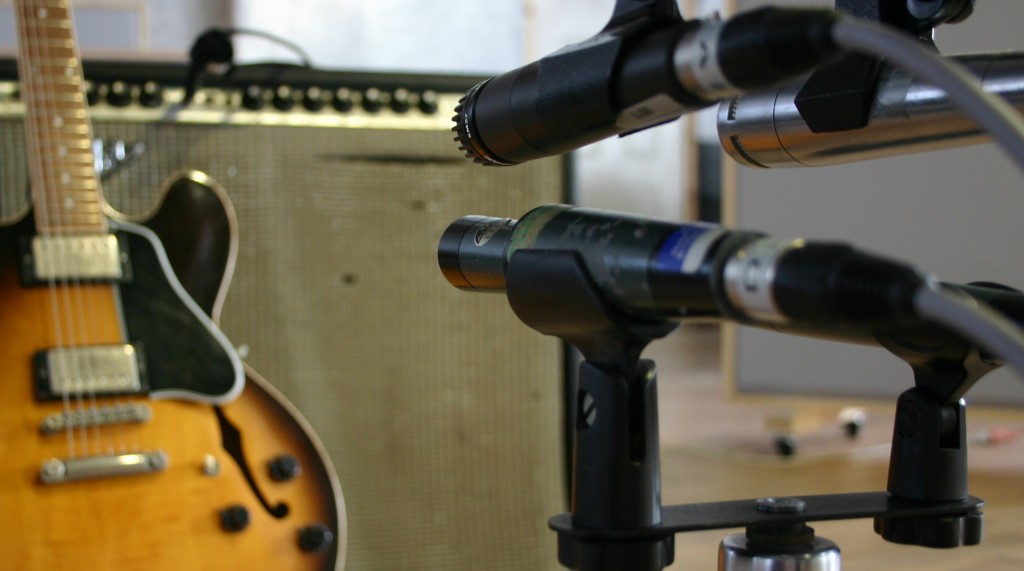(update at close of article)
I was flipping thru a pile of old DB magazines and the above image caught my eye. Let’s see here… clockwise from top left we see a U87, an SM58, RE20, MD441, KM8(x), RE16, SM81, MD421, and then… wtf is that thing? In this collection of classic 70s mics, I recognized, and in fact often-use, all except that last little fella. On the table-of-contents page, I was told that this is an Audio Technica 813. Well, if at least SOMEONE, sometime, thought that it could stand in that lineup, I had to learn more…
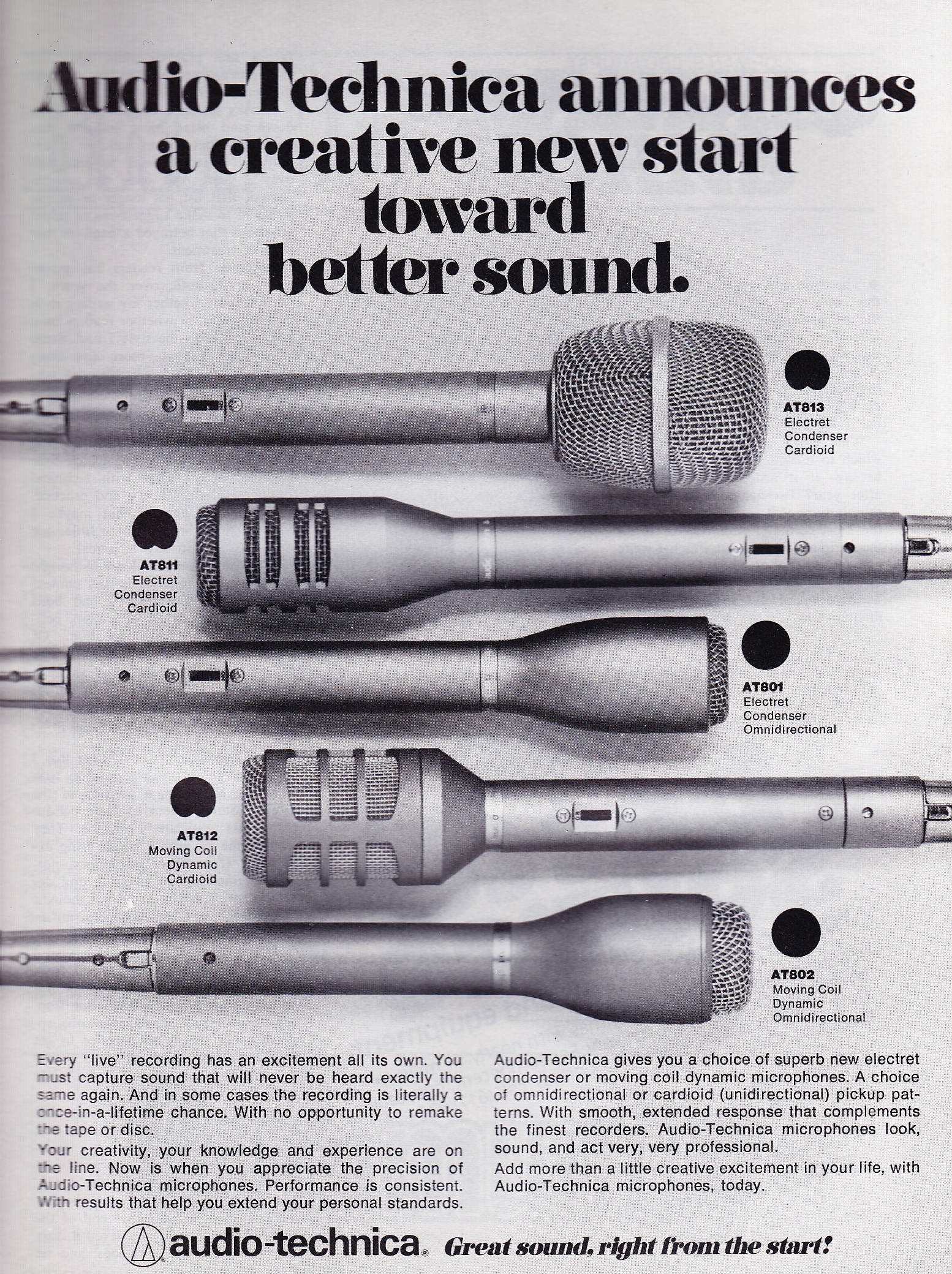 Above: a 1977 advert introducing the AT 813. From the body copy, it seems like the mic was at least initially aimed at live-concert tapers and other semi-pro and amateur recordists (E.G., “(these mics) look, sound, and act very professional.” The use of the term ‘professional’ in advertising almost always indicates the contrary). The 813 is, like the much-more famous Shure SM81, an electret-condensor microphone. Electrets differ from other condensor mics in that the backplate is semi-permenantly charged rather than polarized via some external DC source (for instance, phantom power). Electrets are generally cheaper than ‘true’ condensors and therefore tend to get a bad rap, but hey I think we all recognize that SM81 aren’t all that bad… so they do deserve a look.
Above: a 1977 advert introducing the AT 813. From the body copy, it seems like the mic was at least initially aimed at live-concert tapers and other semi-pro and amateur recordists (E.G., “(these mics) look, sound, and act very professional.” The use of the term ‘professional’ in advertising almost always indicates the contrary). The 813 is, like the much-more famous Shure SM81, an electret-condensor microphone. Electrets differ from other condensor mics in that the backplate is semi-permenantly charged rather than polarized via some external DC source (for instance, phantom power). Electrets are generally cheaper than ‘true’ condensors and therefore tend to get a bad rap, but hey I think we all recognize that SM81 aren’t all that bad… so they do deserve a look.
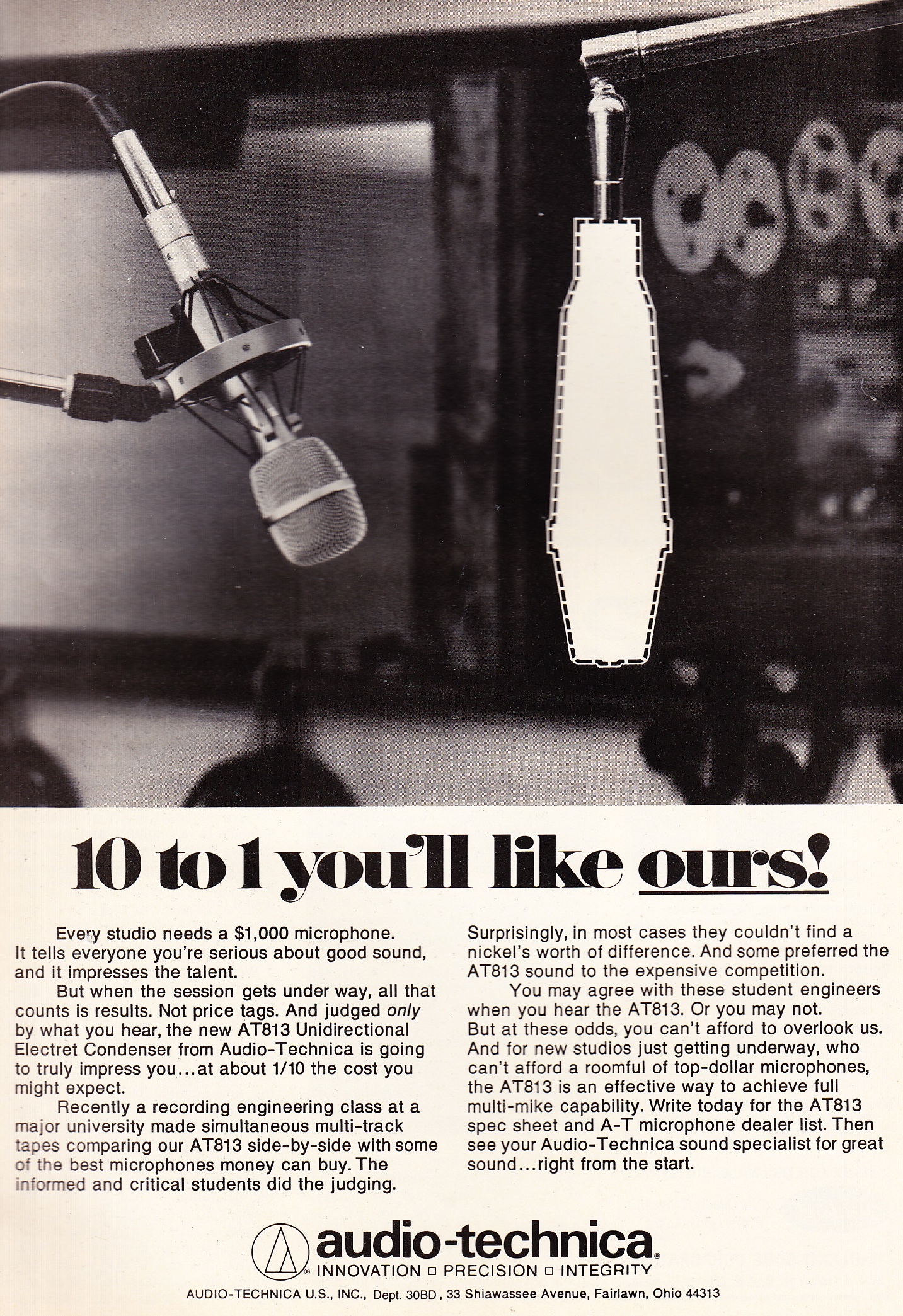 …But maybe not this look. Fast-forward to 1980, and the above-depicted ad SUGGESTS that the AT813 is ‘within a nickel’s worth’ of a Neumann U87. This… I found a little hard to believe. So what did I do? Well, I bought an original circa-’77 AT813 and made a side-by-side comparison with a similar-vintage U87. I made a quick recording using both mics and now you can judge for yrself.
…But maybe not this look. Fast-forward to 1980, and the above-depicted ad SUGGESTS that the AT813 is ‘within a nickel’s worth’ of a Neumann U87. This… I found a little hard to believe. So what did I do? Well, I bought an original circa-’77 AT813 and made a side-by-side comparison with a similar-vintage U87. I made a quick recording using both mics and now you can judge for yrself.
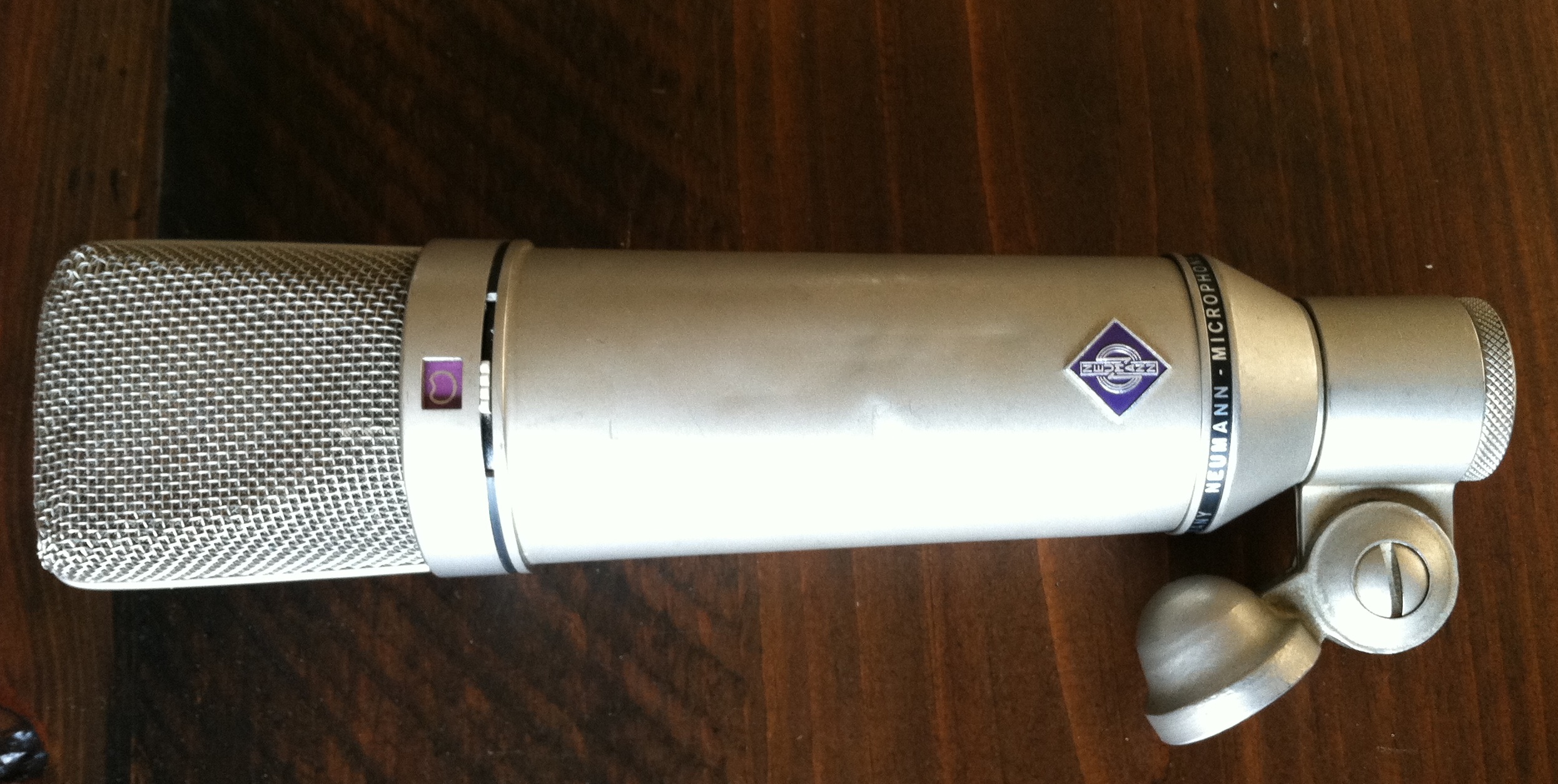 Above: my much-loved and much-used mid-seventies U87. This is original version of this classic mic, and it actually can run on either AA batteries or phantom power (I use phantom power). This gets used on pretty much every session; they are not inexpensive mics but worth every penny. It’s actually my go-to mic for acoustic steel-string guitar, and I use it on certain vocalists as well.
Above: my much-loved and much-used mid-seventies U87. This is original version of this classic mic, and it actually can run on either AA batteries or phantom power (I use phantom power). This gets used on pretty much every session; they are not inexpensive mics but worth every penny. It’s actually my go-to mic for acoustic steel-string guitar, and I use it on certain vocalists as well.
 …And above, my new (to me, that is) circa 77 AT813. The 813 also runs on a AA battery, a single battery, and the battery serves merely to power the onboard preamp (remember, this is an electret-condensor so the capsule requires no external polarization). Now, there is a later version of the 813 called the 813a which operates on either the AA or phantom power; I did not have that option here. (The 813A version apparently has much improved dynamic range when operating from phantom btw)
…And above, my new (to me, that is) circa 77 AT813. The 813 also runs on a AA battery, a single battery, and the battery serves merely to power the onboard preamp (remember, this is an electret-condensor so the capsule requires no external polarization). Now, there is a later version of the 813 called the 813a which operates on either the AA or phantom power; I did not have that option here. (The 813A version apparently has much improved dynamic range when operating from phantom btw)
 Above, the test-setup. You are going to hear a single finger-picked performance of my wonderful new Gibson J45. Let me digress for a moment here (I imagine that at least some of y’all are gtr plyrs) to report that Gibson’s quality has come a long, long way. Ten years ago I had an informal sponsorship with Gibson; they loaned me guitars for touring and even gave me a new Firebird V, which I still have… in my closet. The guitars just weren’t that good. Fast-forward to 2012, several of my clients at GCR have new Gibsons acoustics, and I was pretty impressed with them. So I got this new J45, and it sure wasn’t cheap, but good lord does it sound+play great. The fit and finish are up there with the best handmade ’boutique’ acoustics that I have seen, and for a lot less money. Definitely worth a look.
Above, the test-setup. You are going to hear a single finger-picked performance of my wonderful new Gibson J45. Let me digress for a moment here (I imagine that at least some of y’all are gtr plyrs) to report that Gibson’s quality has come a long, long way. Ten years ago I had an informal sponsorship with Gibson; they loaned me guitars for touring and even gave me a new Firebird V, which I still have… in my closet. The guitars just weren’t that good. Fast-forward to 2012, several of my clients at GCR have new Gibsons acoustics, and I was pretty impressed with them. So I got this new J45, and it sure wasn’t cheap, but good lord does it sound+play great. The fit and finish are up there with the best handmade ’boutique’ acoustics that I have seen, and for a lot less money. Definitely worth a look.
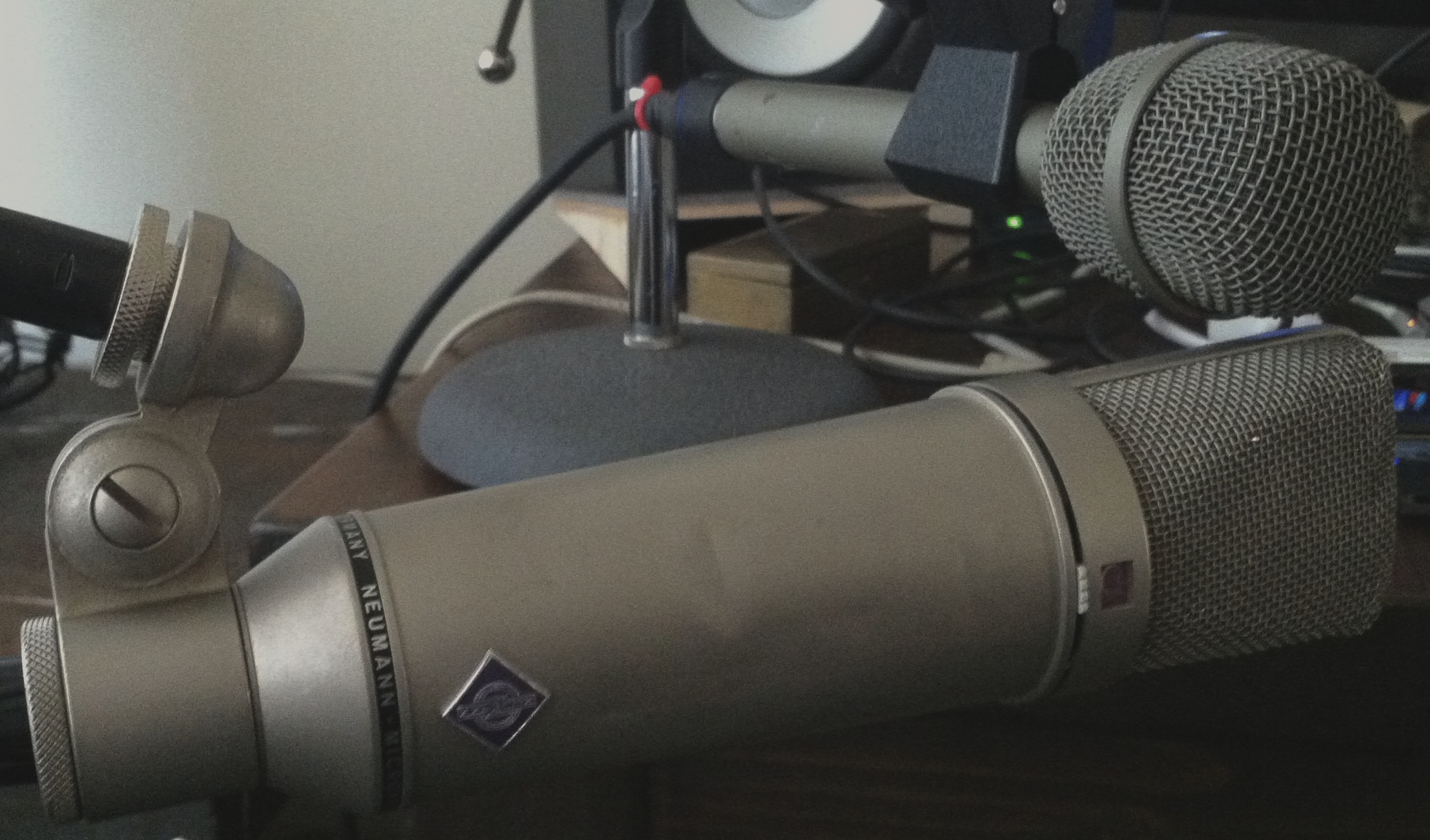 Above: you can see the capsule spacing for the recording here. This recording was made in my lil home composing studio, an 8×12 plaster room that sounds like… an 8×12 plaster room. You have been warned. Without further ado, here is the Audio Technica 813! The budget mic that challenged a Neumann!
Above: you can see the capsule spacing for the recording here. This recording was made in my lil home composing studio, an 8×12 plaster room that sounds like… an 8×12 plaster room. You have been warned. Without further ado, here is the Audio Technica 813! The budget mic that challenged a Neumann!
LISTEN: AT_813
…and here is the identical performance via the U87:
LISTEN: U87
You are hearing no EQ, no compression, and both audio clips have been normalized so that they peak at -0.1db. So it’s pretty apples-to-apples. My $0.02? They don’t sound very similar. The U87 sounds much ‘prettier’ and there is less boxiness in the midrange. The bass seems to extend deeper. The highs are pretty comparable in terms of frequency extension. The biggest point in the U87’s favor, though, is the noise floor. The mic preamps (MBox2, baby!) were at approx the same level, but the U87 track has considerably less noise. I left a very long tail on the end of the passage so that you can compare the noise floor.
Now, in the 813s favor… the recording does not sound bad. Not at all, aside from the noisiness at the fade out (which, for most music sources, would actually not be as much of an issue… we are talkin solo- fingerpicked guitar here, it’s pretty quiet). Considering that these mics can be had for $50 on eBay, it’s certainly not a bad deal. At some point I will probably A/B this 813 with an SM81 and a few of the other SDCs around the studio; that would certainly be a more fair comparison.
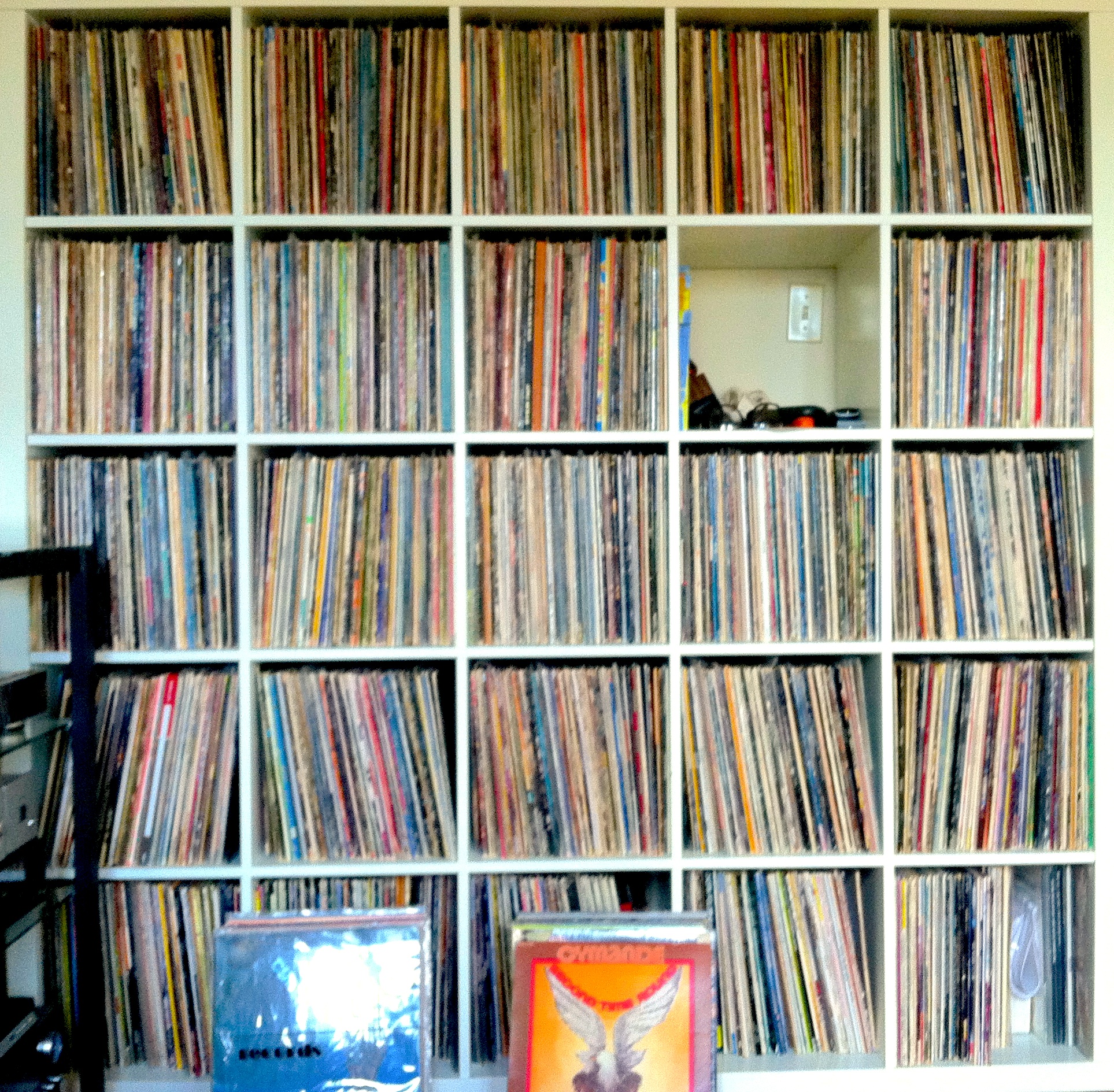 Above: part of my LP collection/pile.
Above: part of my LP collection/pile.
So what’s the point. I read about a cheap, forgotten condensor-mic in an ancient magazine, bought one, and voila! it’s not as good as other mics that I already own. As I hope y’all have surmised by now, the endless, compulsive digging and searching thru old audio gear and its related literature is not part of some nostalgia trip for me; nor am I one who believes that ‘vintage is better’ when it comes to audio hardware. The fact is, I wasn’t even alive when most of this stuff was made, and the two pieces of audio equipment that I use the most are Pro Tools and my late-model monitor speakers. But as someone who’s livelihood depends on putting sounds together, making sounds, and constantly trying to make the sounds fresher+bolder, I need to draw inspiration and techniques from somewhere. The present moment is full of wonders and technology often creates fantastic new tools that speed workflow and improve quality (Cleartune, anyone?), but the past is a treasure trove as well. And as a source of ideas + tools, the past does have one distinct advantage, vis-a-vis creating work that stands out. There is only one present, and we all live here, but there are an unlimited number of pasts. Pick a past that no one else is mining and you’ve got a pretty unique toolbox. Which brings me back to the LPs depicted above. Musicians tend to chuckle when I mention a bunch of songs that no one in the room has ever heard of, as I am known for being somewhat of an obscurist when it comes to rock music. But make no mistake: I like the Stones and U2 and Nirvana and (etc etc) as much as anyone else. I just don’t think that there is any point whatsoever in drawing inspiration or any kind of sonic blueprint from that material. It is just way, way, way too overdone. It’s been picked at and re-examined from every possible angle. Which is why I spend hundreds of hours per year looking through tens of thousands of dusty old LPs: just to find the ones that no one remembers. To a working producer like myself, those are the records of value. They are not necessarily better or worse. But they do offer many more possibilities in terms of being a springboard into uncharted territory.
*************
*******
***
PS: thought I should mention, while on the subject of ye olde Audio Technica: if you have not used their old ATM25 dynamic mics you are missing out… they recently re-issued these things for $280, and I have not heard the re-issue, so i can’t comment there… but the original ATM-25s, which I first used almost 20 years ago and I still use today… are pretty unbelievable, esp. for rock bass-guitar speaker cabs and as an inside-kick mic. Better than a 421 or 441 IMO. I picked up an ATM25 for around $100 a coupla years ago; they sold a ton of these things so if yr patient you can prolly find a deal.
update
An interesting comment was inadvertently inserted in a spot that no one would likely find it; I reproduce here for easier access.
“These early At mics were conceived by some ex Electrovoice engineers and salespeople.
Very well targeted and designed.
Regarding the AT813, AT831A and the ATM31 (same mic, different paint) had nearly identical on axis (cardioid) and especially off axis response to the U87. The U87 tended to get very omni at high frequencies so it sounded crisper off axis which is where some of the sound comes from in many cases, lending to it’s unique sound.
I sold many of them over the years and most people were very happy with the result. Remember this was long before cheap Chinese condensers. We also marketed a private label variation which was called a “C87″.”
